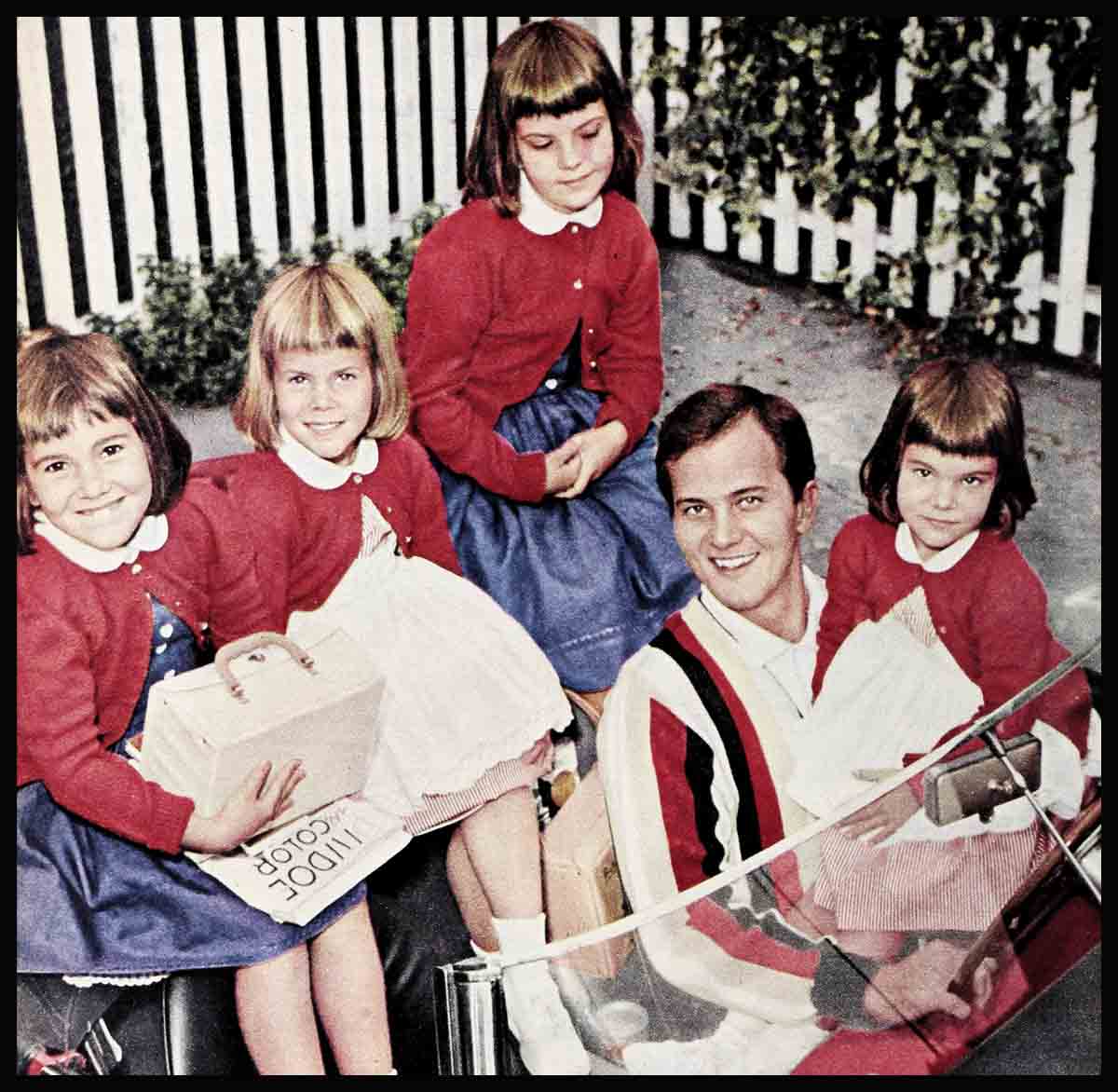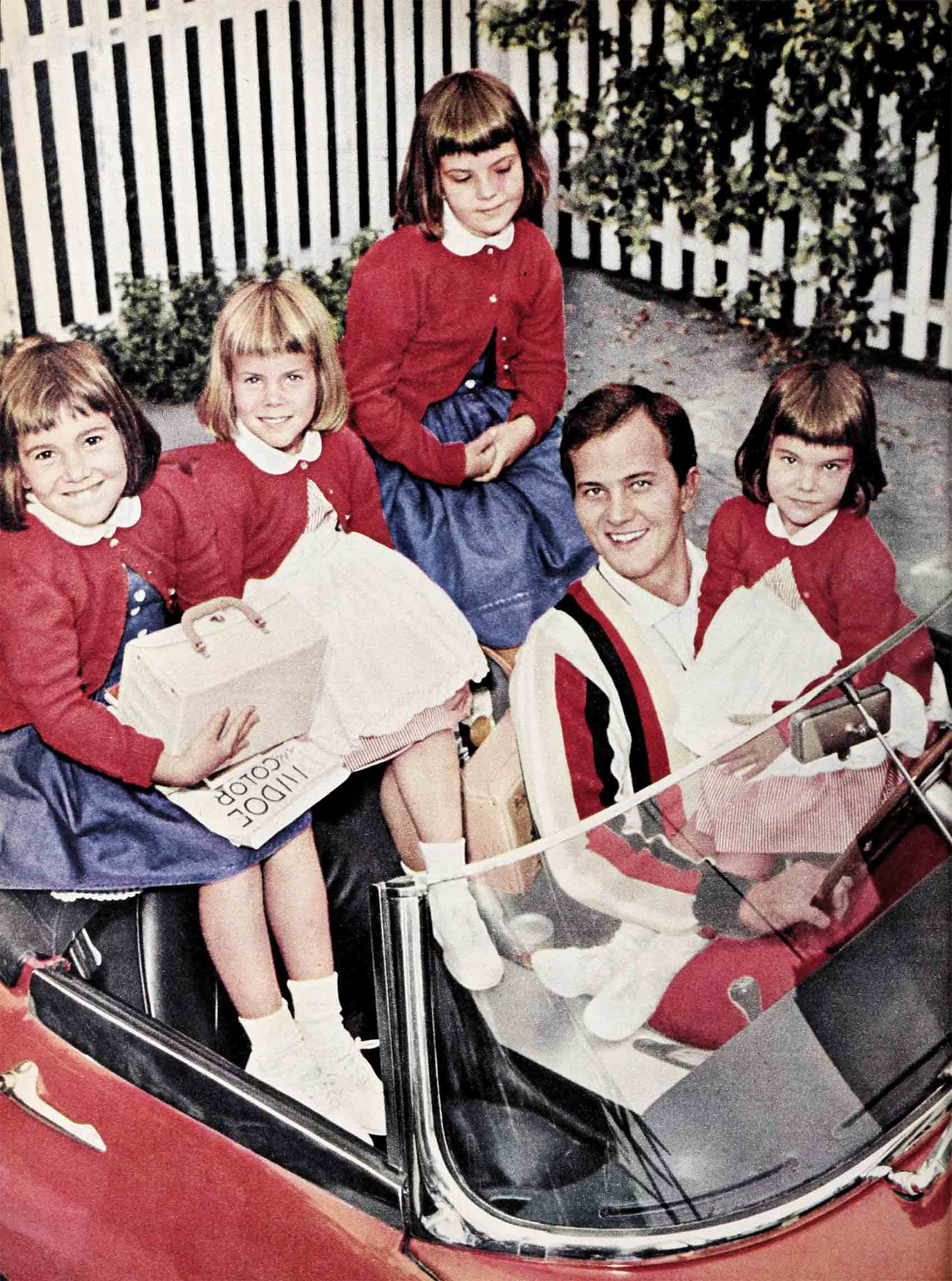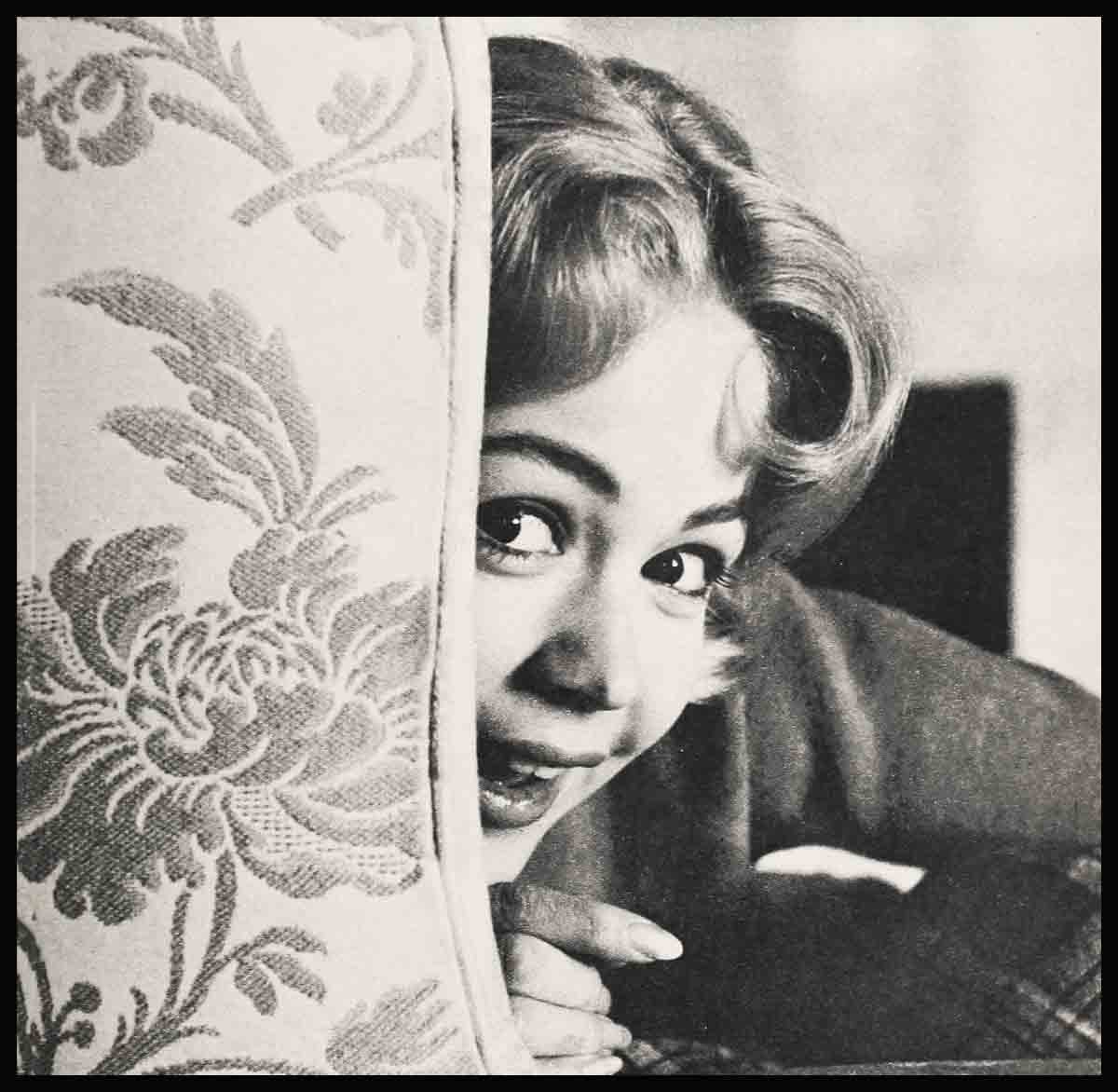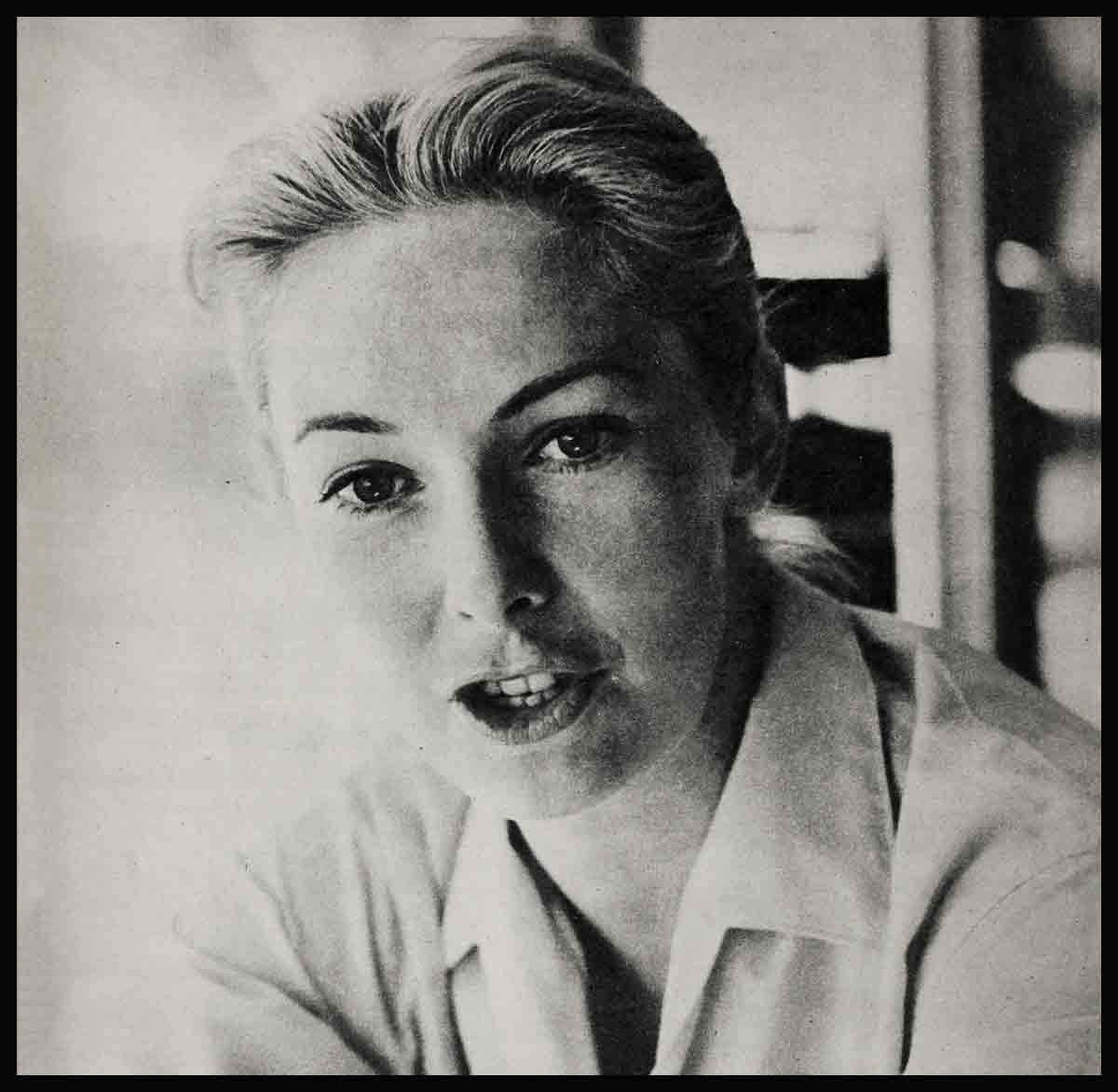
His Church Accuses Him Of Wilderness—Pat Boone
The things they’re saying about Pat Boone!
“A fallen idol . . . we weep for him . . . Hollywood has seduced him . . .”
These are not the words of an enemy. Those wounding judgments are printed in a religious magazine, “Christianity Today,” a publication of Pat’s own—and very deep—faith!
“A fallen idol . . . we weep for him . . .”
A Hollywood magazine writer who refused to be named gave Pat an even harder time—though in conversation, not print. “Don’t hand me that religious Pat Boone stuff any more,” she snapped. “He’s a hypocrite, or he wouldn’t be in Las Vegas.” She went on, “Vegas is all right for somebody like Sinatra, who’s never pretended to be a saint. But Pat! That model!”
In her accusations, this writer used the ugly word “shill” for Pat Boone—a word that means a “come-on”—in this connection “sucker-bait” to lure Boone admirers into a gambling casino. Something which Bing Crosby had refused to do, saying he wouldn’t sing in Vegas because he “wouldn’t be a shill for gamblers.”
Nor did it help, on top of all this, that Pat frankly admitted he stayed up one entire night with Eddie Fisher at the Desert Inn—a gambling joint—though he insists that he himself did not gamble; that Shirley was with him and they only watched while Eddie lost a wad and then won it all back. By which time, as Shirley and Pat let themselves into their own luxurious suite in the Sahara Hotel towers, it was 8:30 A.M. and the four little Boone girls were awake and chirping.
Even back home in Tennessee, where everyone in Nashville remembers how those lovesick teenagers, Pat and Shirley, ran away to get married nine years ago, they’re worrying now. Wondering why Pat has gone back on his “no kissing” edict in making movies. Fretting because in “State Fair” he took off his shirt and kissed—passionately—that hot little Ann-Margret. And played a drunk scene. And, in his new picture, “The Main Attraction,” plays an even drunker scene and love scenes with Nancy Kwan and Mai Zetterling!
No kissing? Why?
Anyone who wonders why it’s taboo for Pat to make love before the cameras when this is stock-in-trade for every other Hollywood actor is forgetting the widely-respected and largely self-imposed Pat Boone image. Pat began his career as a fresh-faced, cleancut, deeply religious teenager who became a singing idol for millions of other teenagers. He began for $44 a week on which he and Shirley and the earlier of the little Boone girls lived happily. When he went onward and upward—to a spot with Arthur Godfrey, then to his own TV show, and top hit recordings, and a million dollars worth of autographed Pat Boone sweaters, bathing trunks and pre-scuffed white duck shoes, his way of life remained unchanged.
True, there was now much more money, and a pretty home in Leonia, New Jersey, and a sleep-in baby sitter to help Shirley look after four frisky little girls. But nothing else changed. Pat and his Shirley were still very young (Pat is only twenty-eight now as he sits on top of the world); very much in love, devoted parents, and wanting nothing more from life except, of course, a son. The religious life that was ingrained in both of them from childhood never lost its grip. Every Sunday the whole family went to services of the Church of Christ. And Pat not only attended evening services several nights a week but also led song worship and delivered sermons.
When skeptics implied that his religious fervor was seasoned by self-interest, Pat answered, “I’d be living the same way even if I weren’t a public image.” And when Hollywood summoned him he said, “I’d never agree to make any picture that I thought would be a bad influence on my fans or anyone.” If anything, his critics considered him too prim and his enemies called him, straight out, dull!
Yet now this scathing commentary on his picture, “State Fair,” appears in his church paper: “Here is a sordid Hollywood product and Boone is the leading participant.” It speaks of viewing the picture “with indignation and then with profound sorrow.” And it continues: “Some of the picture is meant to be funny, but it’s hard to laugh. Instead, we weep for Boone, because Hollywood has seduced him.”
A preacher of Pat’s own faith told me that the editorial, entitled “Hollywood Seduces a Teenage Idol,” has been widely read, quoted and copied. And a few days before I left to visit Pat in Las Vegas, another clergyman of his denomination sent him a message by me.
“When you see Pat Boone,” he said, “I wish you’d ask him what in the world he’s doing in Las Vegas. He doesn’t need the money. Why is he in a place like that?”
This preacher is by no means a stodgy blue-nose or a religious fanatic. He is chairman of a recreation commission in his city because he believes in fun and wants to help people get some enjoyment out of life. But he doesn’t approve of the Las Vegas variety of fun. And he was seriously concerned that Pat should contribute to it. He knows all about Pat—how as a high-school boy he was too busy even to sit down and eat meals with the family because he lead the singing at church services, worked with youth groups, was a four-letter athlete, member of the school paper staff, a class officer, part-time radio performer—and milked the family cow. When his friend, teacher and minister, Dr. Mack Craig, would come by the Boone house to give his most promising student a lift to evening services, Pat would rush out with his supper plate and fork in hand, and his toothbrush in his pocket. Rather than be late to church he’d finish eating in the car while Dr. Craig drove. Then they’d discuss Pat’s future. Sometimes they thought he should be a teacher. Sometimes a religious leader.
But never in their wildest imaginings did they see him as a future movie star. Or singing in Las Vegas. Or sitting up all night watching Eddie Fisher gamble. Or kissing Ann-Margret.
And now here was another preacher sending Pat rueful messages. And telling me, “I know he’s still a devout member. But our people are awfully disappointed by the things he’s done lately.”
There are friends of the Boones who also wonder if Shirley isn’t—well, not disappointed, but perhaps a trifle perturbed—by some of the newer Boone manifestations. Like kissing Ann-Margret . . . or Nancy Kwan . . . or Mai Zetterling. They point out that Shirl is not only a very loving wife, she is also a jealous one who never did like the idea of her Pat’s lips touching the lips of any other woman, even in front of a camera.
“This is no news to Pat,” says another friend. “He has always known that Shirley took this kind of thing hard. In fact, she had plenty of misgivings about coming to Hollywood at all. She knew enough about what happened to marriages in Hollywood—how so many of them started out fine and ended on the rocks, and she was afraid of what it might do to her happy marriage. But Pat must have convinced her that nothing could happen to them, that he’d be the same loving guy she’d eloped with nine years ago. I wouldn’t be surprised if he even promised her he’d never do more than just sing about love in a picture without consulting her.”
Shirley’s possessive brand of love was also commented upon by an eye witness who’d seen Pat Boone rehearsing for a TV show. “All the while he was waiting for his turn to go up on the stage and rehearse,” this woman said, “Shirley was sitting on his lap. When it was his call, she got off his lap so he could get up. But as soon as he was finished on the stage and came back, she was in his lap again.”
To anyone who knows Shirley Foley Boone, this behavior isn’t surprising. Pat and the children come before anything else in the world. Shirley is a girl who lost her own mother very early in life and had to share her father not only with three other sisters, but with show business, too. Red Foley, the country-style singer of “Grand Ol’ Opry” and “Ozark Jubilee,” couldn’t always be the combination mother-father to his girls that he’d have liked to be. When Shirley first came to David Lipscomb High, her mother was already so ill that Shirl had to stay as a boarding student. That was where she met Pat—and since then he has been her everything—her high school sweetheart, her teenage bridegroom, the youthful father of her children, “her strength” as she always called him. And last spring, when she lost a baby prematurely—perhaps the very son for whom they had been praying—Pat was her rock in their sorrow. Pat and God!
And yet Shirley herself has changed considerably since they hit Hollywood.

The new Shirley look!
“Shirley has practically restyled herself,” friends pointed out. “When they first came here, she and Pat thought nothing of bouncing straight from a picnic to a posh movie with everybody else in mink. They had fun and didn’t care how they looked—they were just like kids about it. But now Shirl has learned how to dress and do her hair and look very glamorous. I guess she figures she’d better do this.”
But whether Shirley Boone is a jealous wife or only a cautiously loving one . . . and for all the shocked disapproval of Pat’s church colleagues . . . and the pained worriment of his mother and father, his old friend Dr. Craig and the other Nashville folk . . . the fact remains that the one who has changed most drastically is Pat. He accepted the Las Vegas singing date with his eyes wide open, fully aware that other “public images” had refused to sing in Vegas. Above all, it is true that Pat’s screen roles have been evolving from his cheerful, harmless stereotypes—the nice kid with dirty sneakers and a pure heart—to deeper and sultrier characterizations like the beatnik drifter involved with two women of “The Main Attraction.”
People are asking “Why?” Why does he do it? Why does Shirley let him do it?
I sought the answer from the most logical answerer: Pat himself. I went to Las Vegas and saw the whole family. And I heard the story of who it was that influenced Shirley to let Pat kiss his leading ladies. Guess!
But first—my visit with Pat. I found him sitting on the sofa of their hotel suite with four-year-old Laurie, the baby, on his knee. (If it isn’t Shirley, it’s Laurie, or Cherry, nearly eight, or seven-year-old Lindy or six-year-old Debbie.)
When I told Pat the charges of his critics he said, “I know some of the things I’m doing are controversial, but I wouldn’t be here if I thought it was wrong.”
Laurie squirmed on his lap and chirped, “Daddy.”
“Ssshhhh,” Pat said, “don’t interrupt now, we’re talking.” He straightened her T-shirt where it had become all twisted.
“In spite of the reports you’ve probably heard,” Pat went on, “I’ve never said that I would never sing in Vegas. First time I ever did come here, Shirley wouldn’t even come with me. So I just came for the day. I got here and took my first look around at this place—and you know what it reminded me of?”
“Hell?” I offered at a guess.
Pat laughed. “No,” he said. “It reminded me of a midway or a carnival back home. You know—where you can have whatever kind of fun you’re after. You can gamble and see burlesque shows, if that’s what you want. You can get in trouble anywhere—unless you make the right choices.”
When I asked, “What about this writer who calls you a ‘shill’?” Pat answered, “Look around, and you’ll see two kinds of people here. The ones who come to gamble and the ones who don’t. The gambler will come to Vegas no matter who’s performing—so I don’t feel like a shill. The others come to enjoy the sun and see a show—and they should have a chance to see a clean show. That’s the kind I’m doing. . . . I even see couples bring their children—that way the whole family can stay up late together and all sleep late the next day. But someone has to offer them the kind of show that the children can see. I do.”
He knew about the editorial in “Christianity Today.” It didn’t make him happy, but it didn’t push him into an apologetic frame of mind, either. His answer to their attack on “State Fair” was, “I think it’s a clean picture.”
And then he said, “People should be able to accept me in more than one dimension. They should be able to understand that the person I am on the screen is fictional. I’m acting! The things I do in the picture have nothing to do with what I’m really like.” I suddenly thought to myself, he’s right, of course. If he were to play Macbeth, nobody would go around saying, “That Pat Boone—he’s a real murderer!” Now would they?
As for the celebrated love scene he plays with Ann-Margret but without his shirt—he did talk it over with Shirley first to be absolutely sure she didn’t object.
Which brings me to the story of who convinced Shirley that she shouldn’t mind when her handsome young husband kisses a glamorous movie star.
It wasn’t Pat—though he has known for some time now that his “no kisses” edict was getting in the way of his career. The whole thing was getting all out of proportion, he realized that. “A couple of years ago,” he told me, “when Shirley and I were in Italy, photographers and reporters swarmed on us saying, ‘Is it true that you won’t kiss your leading lady? No? If Sophia Loren were here this very minute, wouldn’t you kiss her?’ They wouldn’t believe it ! Everywhere we went—the Philippines, Cairo, New Delhi—everywhere—it was the same. In France, of course, the idea of a man who wouldn’t kiss his leading lady was merely too preposterous.”
Audiences grow up, too
The trouble was, Pat knew that moving pictures were changing, audiences were changing. The themes of films were becoming more adult, more daring—concerned with sex and more outspoken about it. And he was standing still! He was still and always the happy-go-lucky young fellow with the dirty sneakers and clean heart.
Pat Boone couldn’t be unaware of his dilemma or he wouldn’t be the same levelheaded young husband and father who had stuck with his college studies even while carving out a career as an entertainer—so that he could teach if he turned out a flop in show business!
No, Pat now was plenty hep to what was going on in the entertainment world. And that there was danger of the whole parade passing him by if he kept standing still at the same old spot. He knew, all right—but he wasn’t so sure that Shirl did. And he didn’t know how to tell her. So he didn’t. But about two years ago he began with serious dramatic lessons while he pondered the restrictions of the “no love scenes” situation.
Finally he had a thought. He arranged for a screening of a fairly old hit of his, “All Hands on Deck,” and took the whole family. This oldie did have some love stuff.
Pat grinned when he told me how it went. “Cherry was sitting next to Shirley. When I went into a love scene with Barbara Eden, Cherry suddenly sat up and looked at her mother. Shirley caught the glance and quickly looked at the screen—to show Cherry it wasn’t bothering her at all, not one bit! Cherry then slumped back in her seat. And Shirley worried, oh this is bad, this is having some kind of effect on our child.
“A little later I had another love scene. Cherry tightened up again.
“And then she leaned over, put her hand on Shirley’s arm and in the warmest little voice whispered, ‘Don’t you worry, Mommy. Daddy’s only acting.’ ”
Pat laughed again, telling me this. “There was Cherry,” he said, “worrying about how her mother was taking it, and there was her mother worrying about how our daughter was taking it. . . . And there was I, finally seeing the whole thing in its proper proportion. Shirley saw it too, after that evening—that as long as our children saw real love at home, saw their mother and father with their arms around each other, we never had to worry over what they saw on the screen.”
So it turns out to be little Cherry Boone whom Pat’s fans can thank or boo—depending on where you stand on the big kissing issue—for cutting through the troubled tangle on this phase of operations. But remember, it is only one side of the problem. Pat’s modern-day departure from his self-imposed purity image may be all squared away with Shirley and the kids; his friends may now consider him less prim and his enemies find him less dull. But it still doesn’t take care of churchmen who accuse him of being wild, wild, wild!
And Pat cares very much what the public thinks of him—he has to ! Much as he wanted to do “The Main Attraction.” he wouldn’t sign for it until the script was so written that it became the story of a man’s regeneration through love.
“I want to be successful,” Pat said to me, frankly and openly. “I want to be a good actor. I even want to win an Academy Award some day. I’d like to keep on having such song hits that I’d win gold records, and I want to go on making successful personal appearances.
“I am, I realize, the kind of guy who can’t stand to go half-way. I want to do the best and get as far and as high as I can. It’s Shirley who says, ‘Remember the things you believe in and the things that are important to you. You can’t sacrifice them merely to get to the top. If you can achieve what you want—and still make it harmonize with the things you believe in and the way you live—all right. But just remember that the end never justifies the means.’ And she’s right, my Shirley. She’s a real anchor!”
But of course, there are all those “ifs” to I contend with. “If you can make it harmonize . . .” Pat knows he’s on the horns of a dilemma: to go with the tide and hear the church cry “Wild! Wild!” or buck the tide and hear the others whisper “Too prim and proper!” “Too dull!”
Smokes, drinks, kisses . . .
And what happens when you try to play it down the middle? Well, the Pat Boone who once turned down a big radio show back in the days when they needed money badly—he wouldn’t work for a cigarette sponsor—now is called a shill for gamblers. And has learned to smoke a pipe for a picture—and like it. He was the one who talked Shirley out of smoking cigarettes—for health reasons, he argued—when she was carrying Cherry. But now. working up his approach to his new role in “Attraction,” he tried a pipe and likes it. Shirley fights back at him with all his own arguments, but he insists it isn’t anything like smoking cigarettes—he’d never touch those.
And the Pat who never had a drink in his life has learned how to act very drunk for the same picture. Not a little drunk as in “State Fair.” Very drunk!
Whether “Christianity Today” will recognize the difficult art of acting that went into these scenes, or whether they will again cry out that Pat Boone is betraying his principles, remains to be seen. If they attack him again, there isn’t much he can do about it—not if be still wants to push his career to the full.
When Pat first went to Hollywood his mother said, “Pat accepted the divine inspiration of the Bible completely when he was a child . . . he won’t go too far wrong.” Pat continues with his church work, he and Shirley continue to rear their children with profound reverence for God’s power—they are still praying, all six, for that baby boy they want so much. But all this, of course, is his personal life.
Career-wise, Pat can’t forget that as far back as 1957, when his TV show premiered, reviewers wrote condescendingly of cornball cuteness, of white shoes, shy grins and hymn singing on a “pretty mild show.” And this is 1962. with audiences veering further and further from cuteness toward the harsher realities of life.
There is no one answer to Pat’s dilemma. He is a decent man who knows he must compromise if he is to survive in a commercial world. These are the facts of life that he, his church, his wife and children, will have to live with. Because this is the nature of a dilemma. A dilemma has two horns, and the best that anyone can hope for is to land somewhere safely between them.
THE END
—BY NORMA GIDEON
Pat’s in M-G-M’s “The Main Attraction.”
It is a quote. PHOTOPLAY MAGAZINE NOVEMBER 1962





zoritoler imol
1 Ağustos 2023Really clear website , regards for this post.